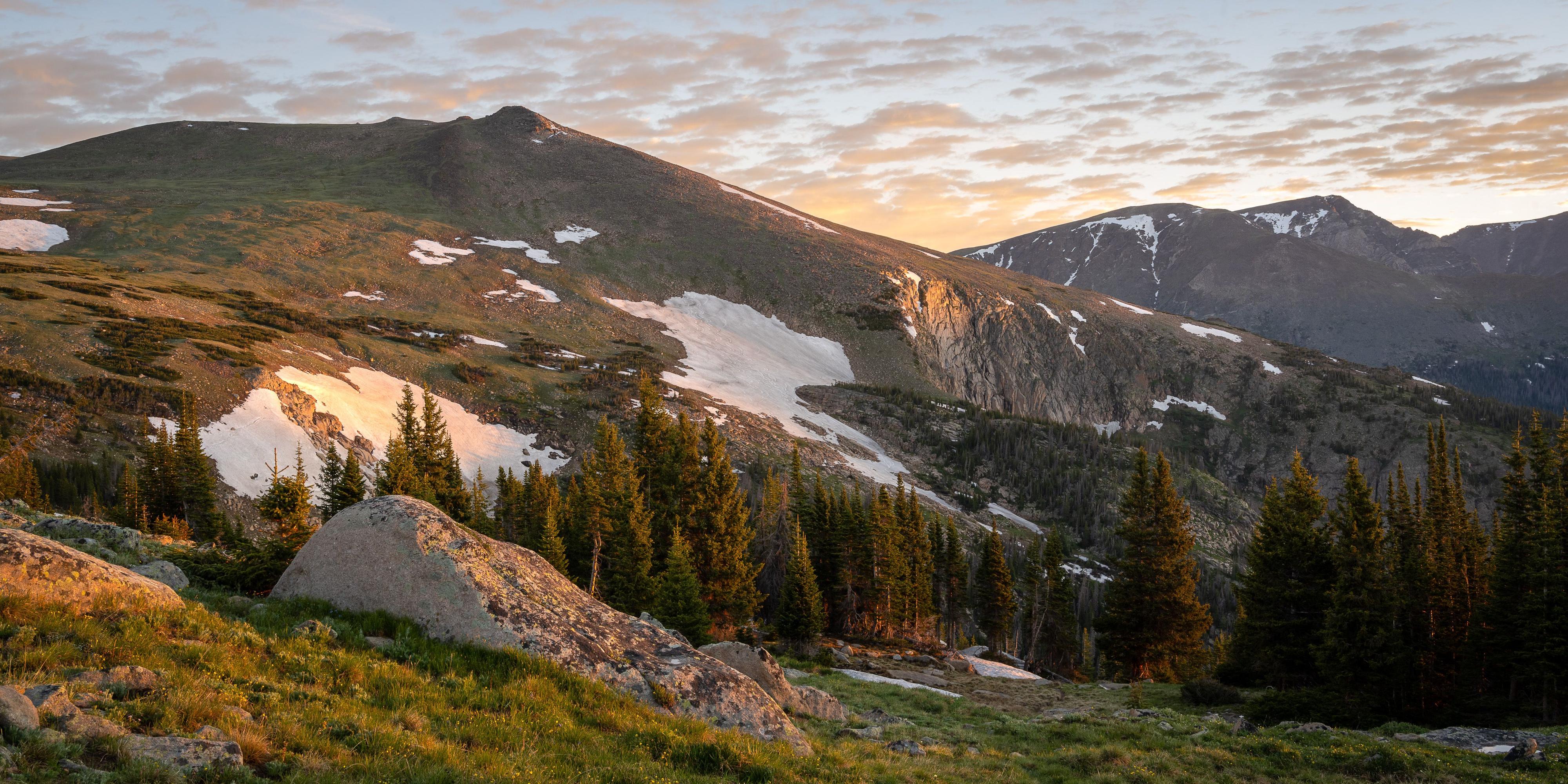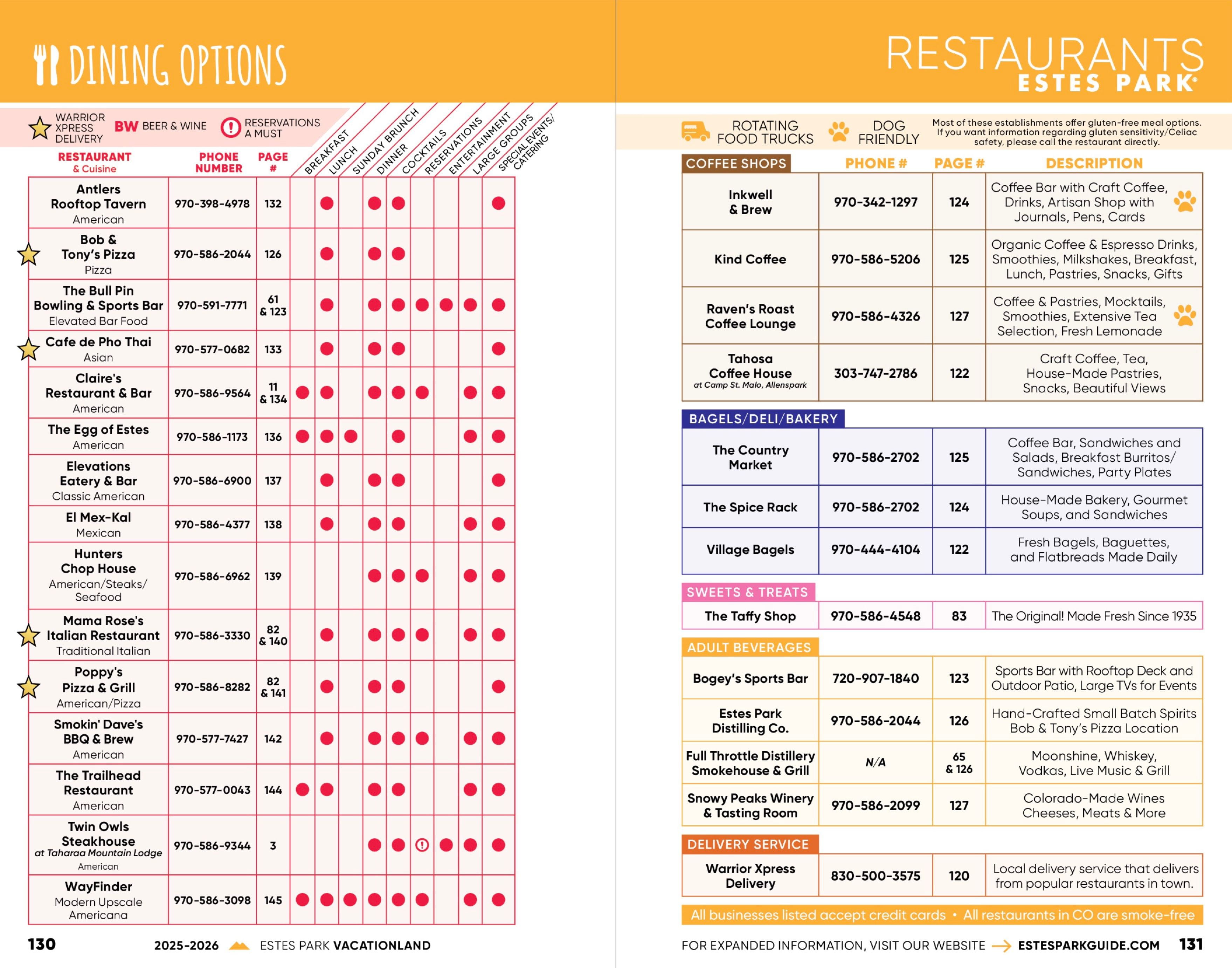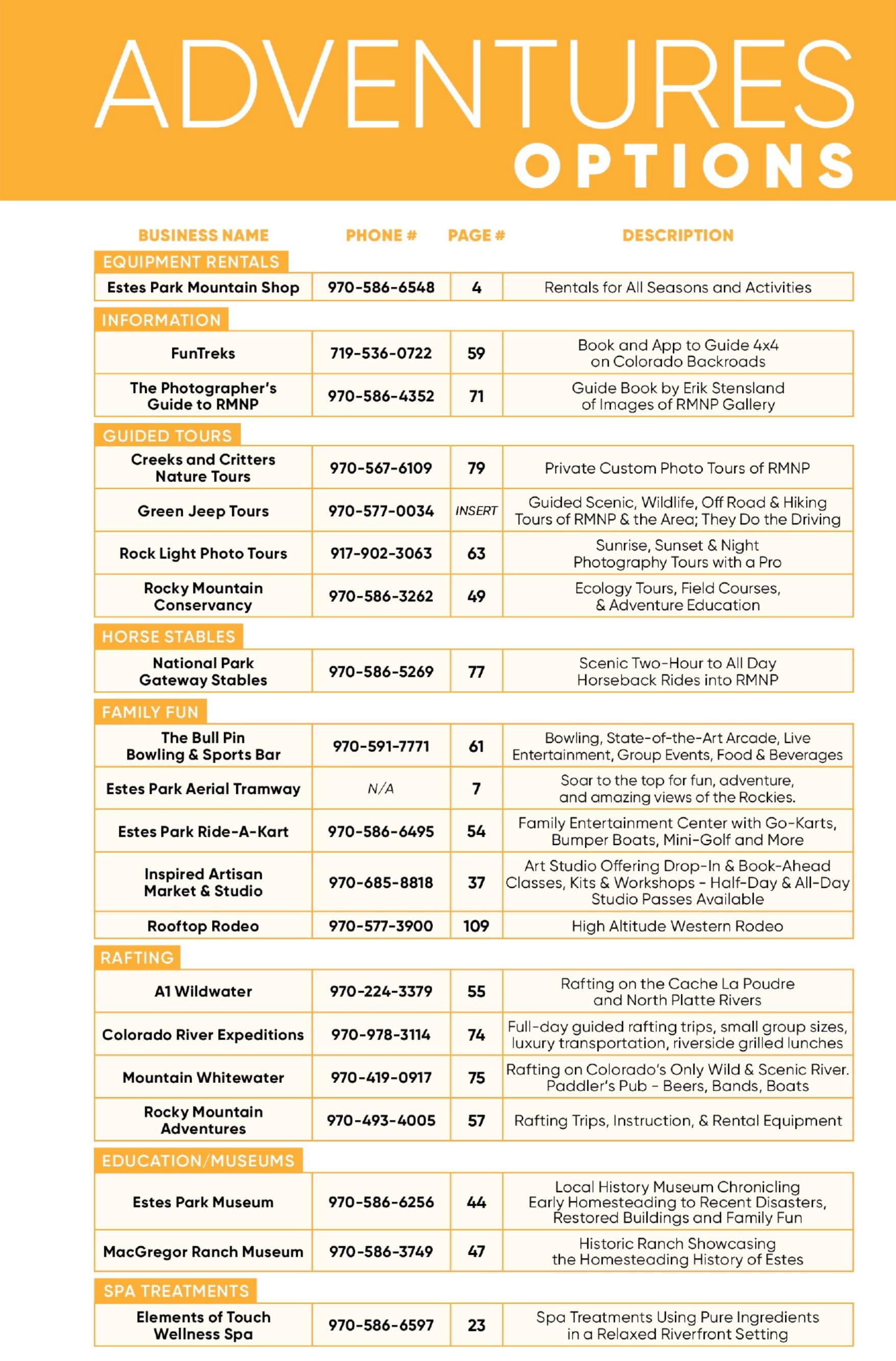Estes Park, Colorado

View Estes Park Restaurant Guide

The Bull Pin - Bowling & Sports Bar
El Mex-Kal
Mama Rose's Italian Restaurant
Tahosa Coffee House at Camp St. Malo, Allenspark
Full Throttle Distillery & Grill
Snowy Peaks Winery & Tasting Room

The Country Market of Estes Park
Estes Park Pet Supply
Guardians Of The Park
Inspired Artisan Market & Studio
Patterson Glassworks Studio & Gallery

The Photographer's Guide to RMNP
Creek and Critters Nature Tours
The Bull Pin - Bowling & Sports Bar
Inspired Artisan Market & Studio
